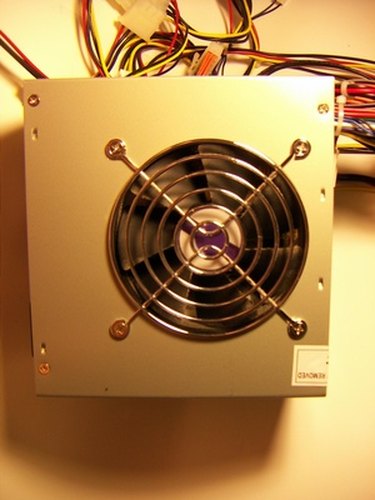
The term "short circuit" is meant to describe an exact electrical situation in which there is a low resistance connection between two nodes. The term is often misused, because it is often used to describe almost any electrical problem. When a computer short-circuits, it usually means something inside isn't connected properly, related to the power supply. If the motherboard isn't connected properly to the case, it can create a short circuit. There are a few possible solutions, though if the simpler options don't solve the problem, the power supply might need to be entirely replaced.
Step 1
Test your computer's power supply by plugging it in to another power strip or another outlet.
Video of the Day
Step 2
Unplug the computer. Open your computer case by unscrewing the access door from the back of the computer. You might have to push a button or release to remove or open the door. Then, use a can of compressed air to blow the dust out of the computer, including the fans and around the motherboard.
Step 3
Check to see if any computer parts are loose. Make sure the motherboard is screwed in all the way. Unscrew the CPU fan and heatsink, lift the CPU bar and remove the CPU. Reseat the CPU, making sure the corner with the missing pin and missing hole in the CPU and CPU socket match.
Step 4
Replace the power supply as a last resort. Disconnect the power supply from the motherboard and all of the drives/hardware that have power connected to them from the power supply. Unscrew the power supply from the back of the case and lift it out. Replace with a new power supply, then reconnect the power to the motherboard and any other hardware that requires a power connection.
Video of the Day